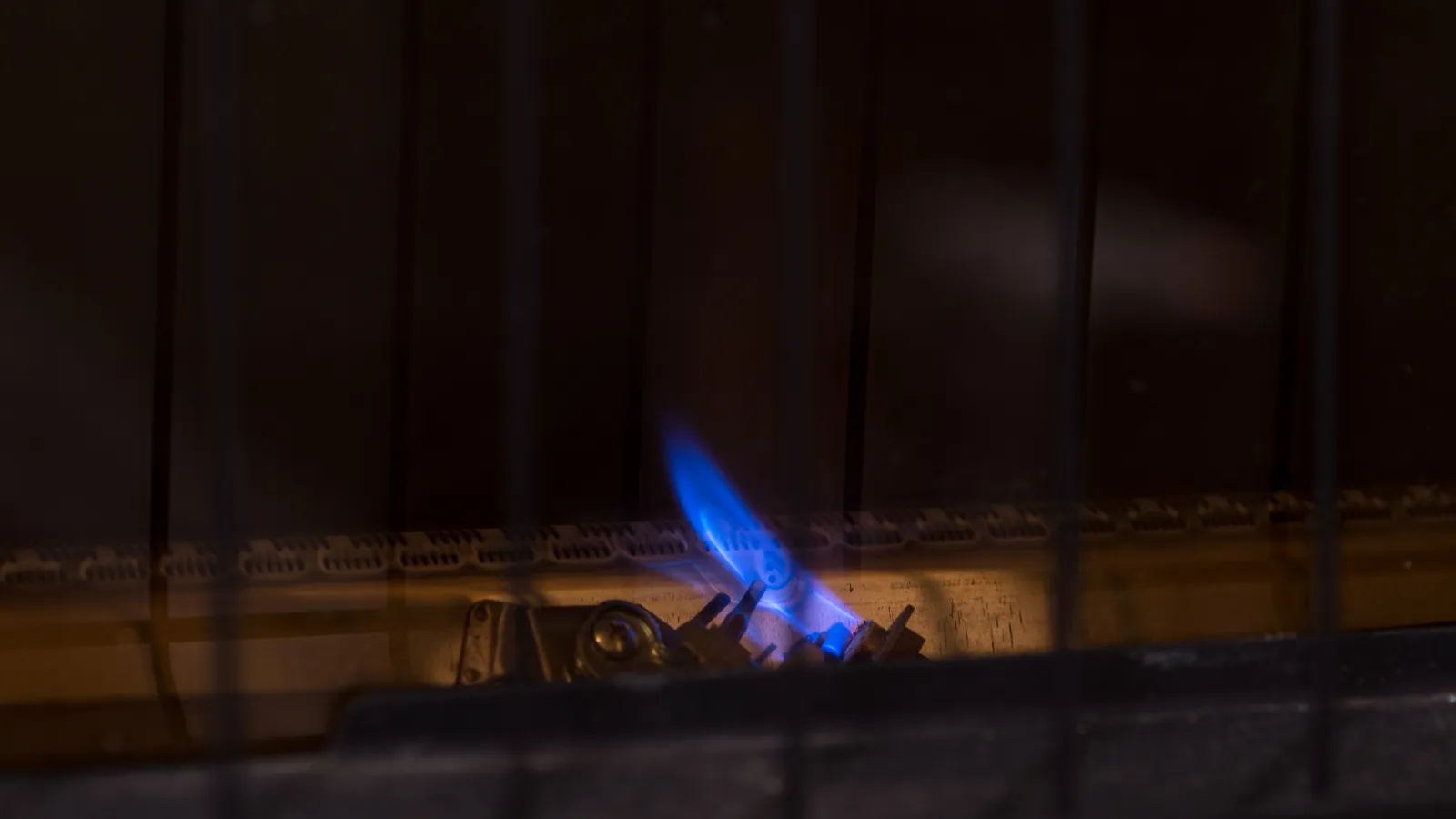What Is a Furnace Pilot Light?

How A Furnace Pilot Light Works
A furnace pilot light may be
constantly burning or may only ignite when the thermostat signals heat is needed.
As the pilot light ignites the gas flower into the furnace's
burner, heat is created to raise the temperature in the house. Additionally,
some furnace pilot lights must be lit manually, such as with a match or
lighter, while other, more modern systems use electronic ignition systems (which is one of the reasons the industry transitioned away from furnace pilot lights).
For safety, furnace pilot lights include built-in mechanisms
that automatically shut off the gas supply should the pilot light go out. For
example, the safety designs help prevent catastrophic accidents such as carbon
monoxide poisoning. Depending on your system, you may have the ability to
adjust the size of the pilot light flame.
The main benefit of a furnace pilot light is that it helps
to ensure there is a flame source to ignite the burner(s) within the furnace.
The burners are what ultimately allow for heat to be created within the furnace
to be sent throughout the home.
Best Practices for Furnace Pilot Lights
Furnace pilot lights are a vital part
in a home
heating system because they start the process. Additionally, they consume a
large portion of the energy consumption from your furnace. As a result, many
homeowners will shut off the pilot light during the warmer months (particularly
in the greater Atlanta area where heat is not needed for large portions of the
year) to help save electricity costs. To help homeowners that still rely on a furnace pilot light, then here a five best
practices to keep in mind.
- Regular Inspection: Routine monthly inspections, particularly during the heating season, help ensure the pilot light flame is steady and blue. Watch out for a yellow or flickering flame, which could indicate a problem with the gas mixture or the presence of contaminants.
- Keep the Area Clean: As part of a regular inspection, ensure that the area around the pilot light is clean and free from dust, debris, or flammable materials. Accumulated dust can affect the flame and cause the pilot light to go out or burn inefficiently.
- Check the Thermocouple: The thermocouple is a safety device that shuts off the gas if the pilot light goes out. If your pilot light frequently goes out, it may be due to a faulty thermocouple, which should be inspected and replaced by a professional if necessary.
- Schedule Annual Maintenance: While routine DIY checks are important, an annual inspection from a local HVAC technician is recommended. With an annual inspection, the technician typically cleans the pilot light assembly, checks the gas pressure, and ensures that all components are functioning correctly, reducing the risk of problems during the heating season.
- Know How to Relight It Safely: Familiarize yourself with the manufacturer's instructions for relighting the pilot light. If it goes out, follow these instructions carefully, and always wait a few minutes for any residual gas to dissipate before attempting to relight it.
How to Relight A Furnace Pilot Light
From time to time your furnace pilot
light may go out, leaving you without heat. Some things that can cause a
furnace pilot light to go out include strong drafts, an inefficiently burning
flame, a malfunctioning thermocouple, or a clogged pilot light tip.
It is important to know how to relight the pilot light. If
your pilot light goes out more than once in a season, you should call a
professional to investigate and remedy the cause.
Pilot Light Instructions
Your furnace's manual should have
instructions on how to relight the pilot light in the event it goes out, so
relighting the pilot light is a DIY activity. While the instruction manual will
have any specific details, the following steps should work to relight the pilot
light:
- Turn off the power to the furnace
before opening the door of the unit and locating the pilot valve.
- Turn the valve to off and wait a couple of minutes.
- Locate the pilot assembly, which is where a silver-colored
line and a copper line come together.
- Locate the reset button.
- Turn the pilot valve to the "pilot" position (most have three
positions: off, on, and pilot). Place a lit match or lighter close to the
pilot assembly. Press the reset button for approximately 30 seconds.
- Slowly release the button and check that the flame stays lit. If
not, repeat the steps above. If it stays lit, you can turn the valve to
the "on" position and replace the furnace door.
- Turn your furnace back on and set the thermostat to call for heat.
If the steps above do not relight your furnace pilot light,
you may have a problem with another component of the furnace that requires troubleshooting
and repair from a qualified HVAC professional.
Because you are dealing with both fire and combustible gas, if at any time you do not feel comfortable performing system maintenance or relighting the pilot light yourself, it is best to contact a qualified HVAC professional who can get your heat back up and running quickly and safely.
Common Questions About Furnace Pilot Lights
- How often should I check my
furnace pilot light?
You should check your furnace pilot light at the beginning of each heating season and periodically throughout the winter, especially if you notice any issues with your furnace's performance.
- What are the signs that my
furnace pilot light needs to be relit or serviced?
Signs that your furnace pilot light needs to be relit or serviced include the furnace not producing heat, the pilot light being out, or the flame appearing weak or flickering.
- Can I relight the furnace
pilot light myself, or should I call a professional?
While you can relight the furnace pilot light yourself by following the manufacturer's instructions, it's often safer to call a professional if you're unsure or uncomfortable doing it on your own.
- What should I do if my furnace
pilot light keeps going out?
If your furnace pilot light keeps going out, this could indicate a problem with the thermocouple or gas supply, and it's best to have a technician inspect it.
- How can I tell if my furnace
pilot light is properly adjusted?
To tell if your furnace pilot light is properly adjusted, the flame should be steady and blue, not yellow or flickering, and it should fully envelop the thermocouple for efficient operation.
For those in the greater Marietta area, if you are having issues with your furnace pilot light or any other part of your HVAC system, then Snappy Services is here to help. From emergency services to annual maintenance plans, our team of local and qualified technicians know the struggle and want to help. As a family owned and operated company, our priorities are the same as yours. We won't recommend a service unless it's what we would advise for our own families. You can rest assured that when you call our expert team, you'll receive fast, high-quality service. And we do it all with a smile!
Contact us today!

